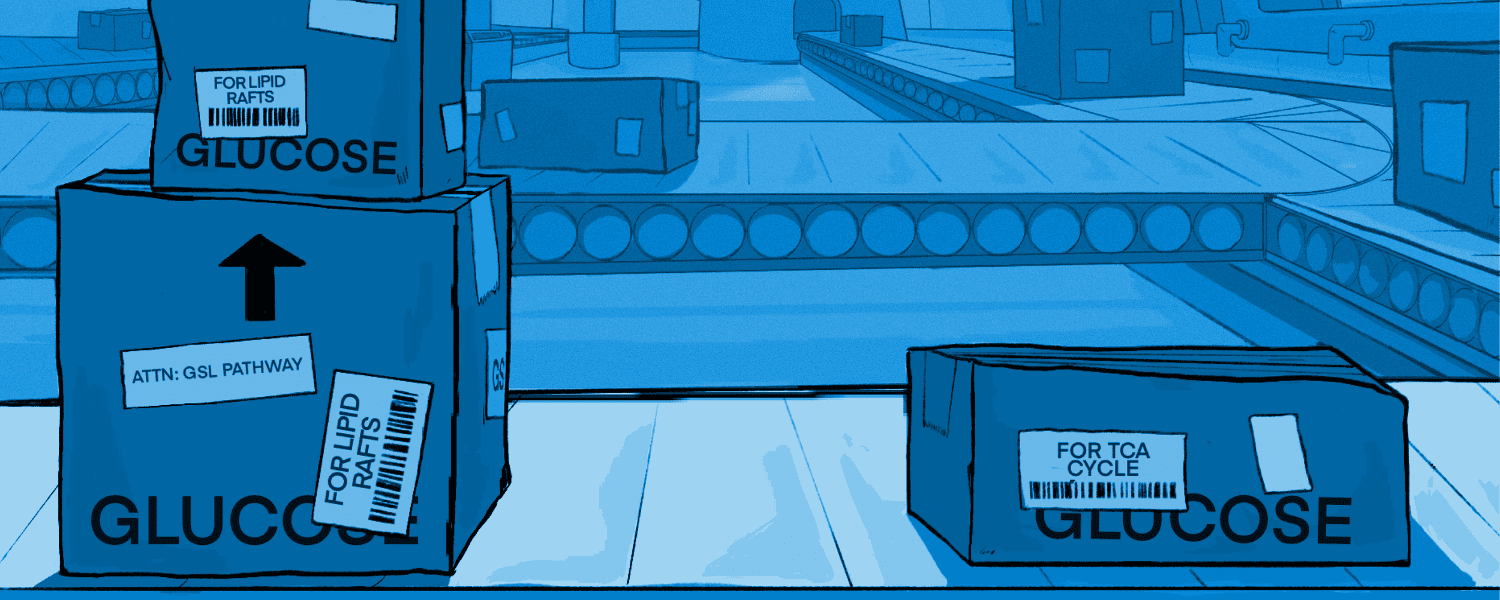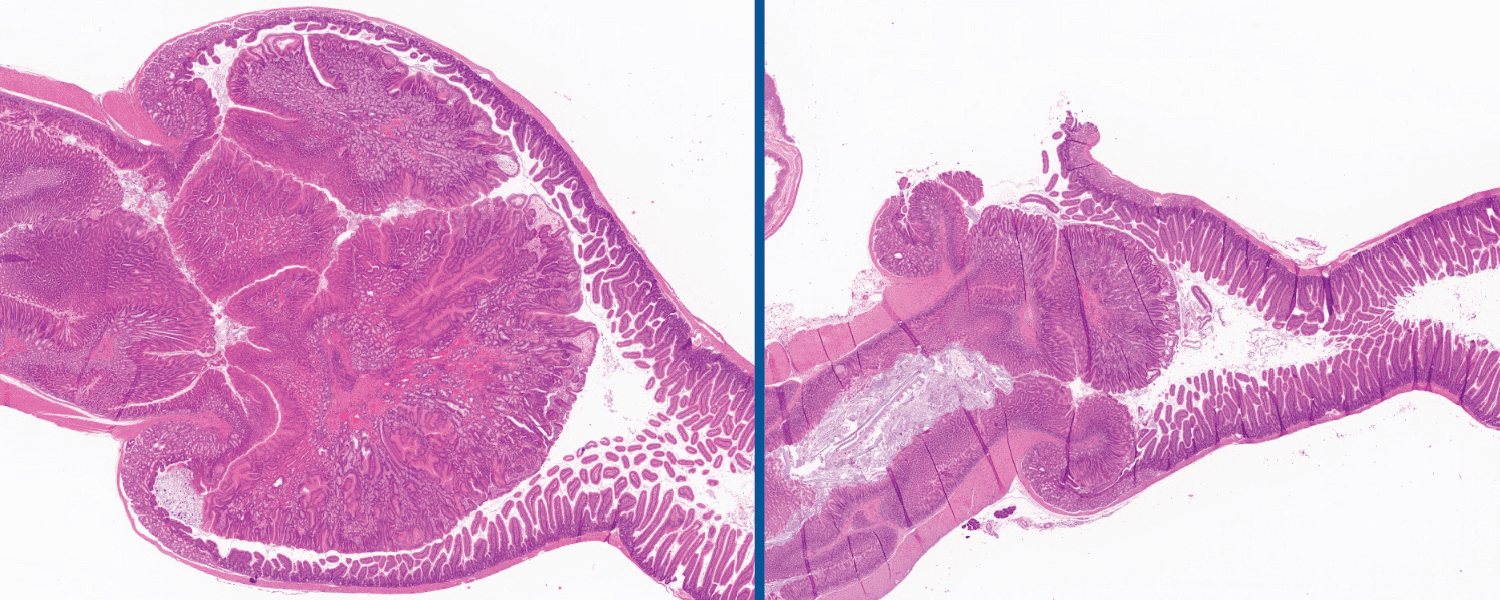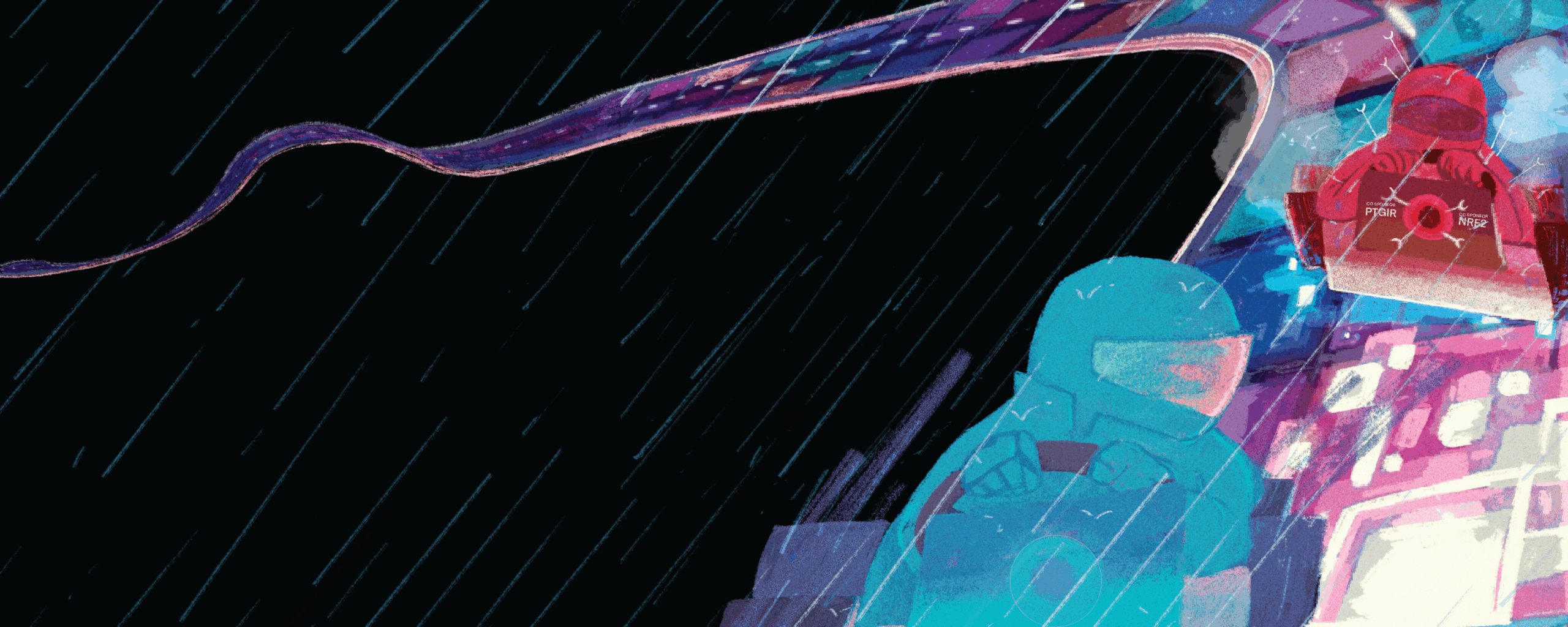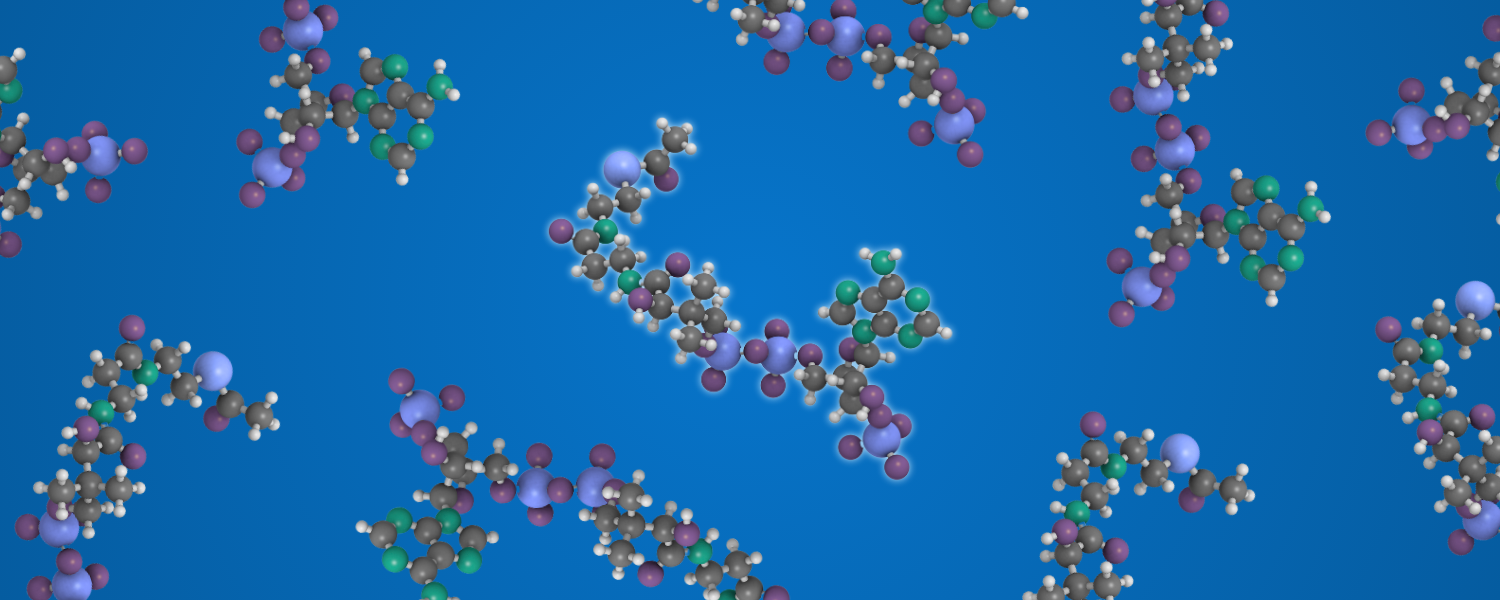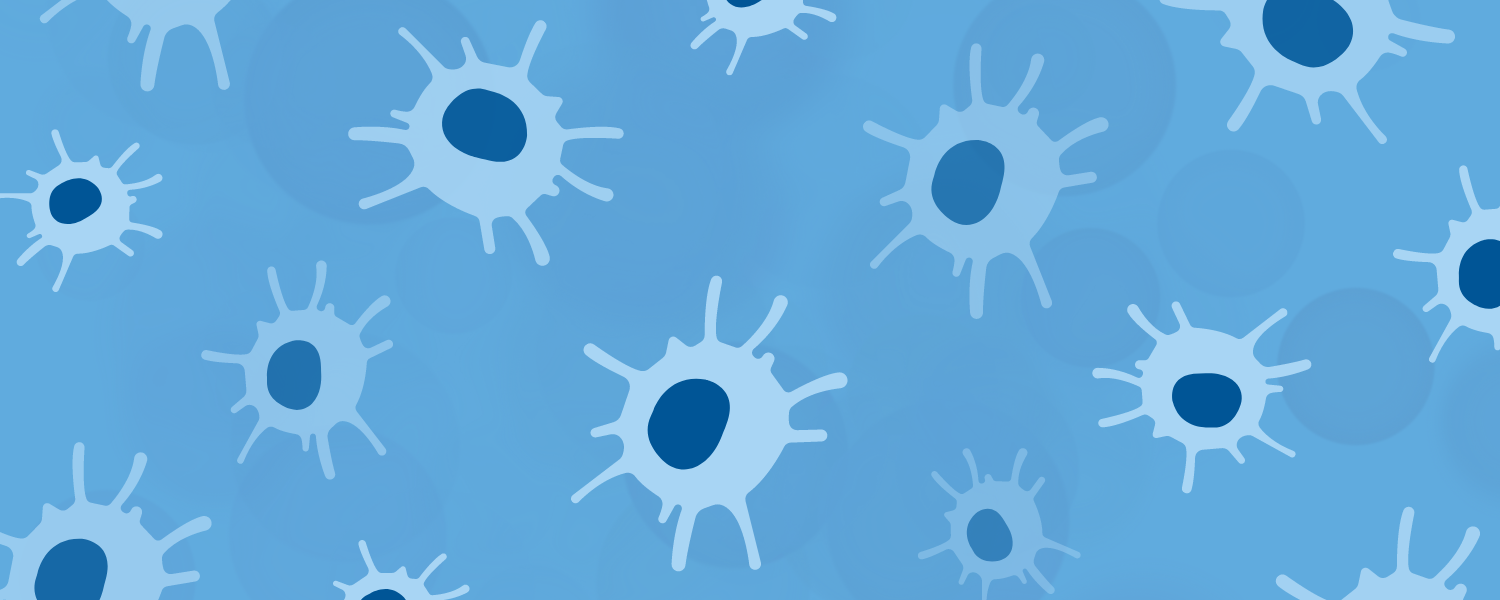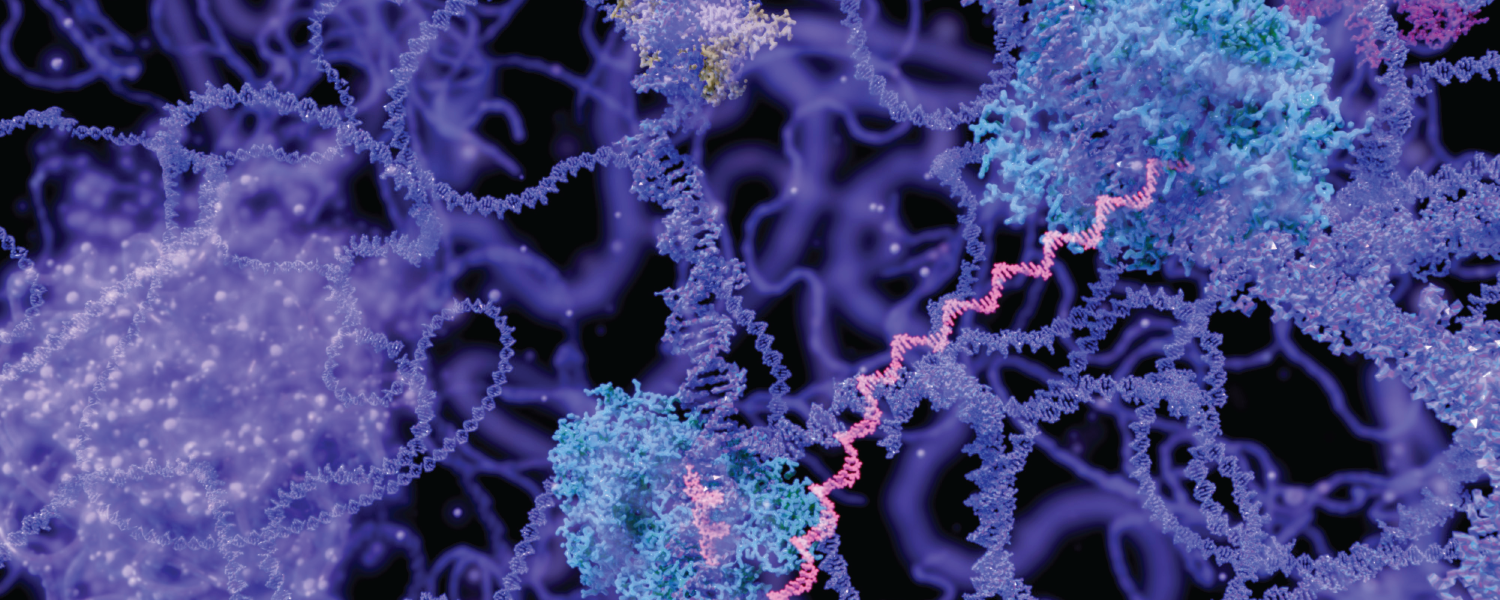Krawczyk
Laboratory
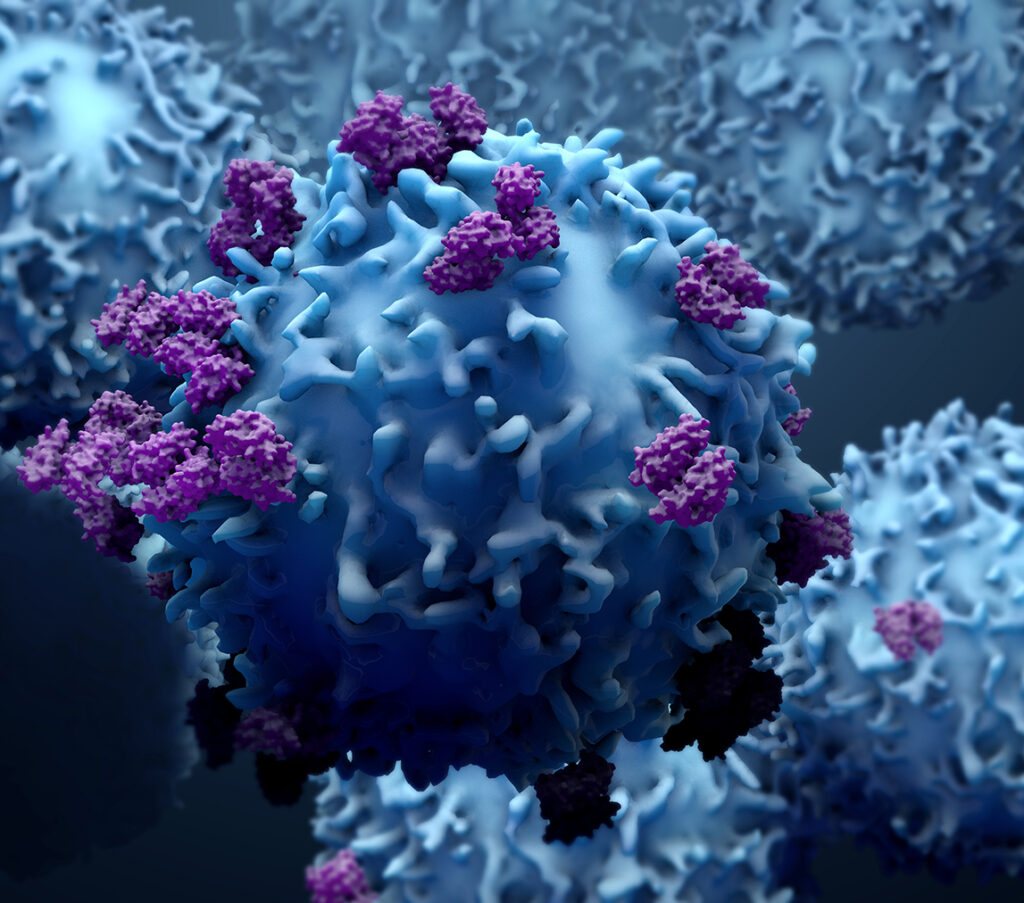 Immunology, Epigenetics and Metabolism
Immunology, Epigenetics and Metabolism
The immune system is the body’s first line of defense against infection and disease and, as such, plays a central role in detecting and eliminating cancers and other harmful agents, like viruses and bacteria. Sometimes, however, immune defenses break down, allowing infections to take hold, or cancer cells to evade detection and proliferate. Metabolic pathways, which regulate cellular energy and function, are emerging as central players in the immune system’s ability to protect against cancer and infections. Growing evidence also points to disruptions in metabolic pathways as a facilitator of cancers’ ability to thwart the immune system. Understanding how malignant cells and pathogens take advantage of these gaps in anti-tumor immunity has great potential for translation into targeted therapies and anti-cancer vaccines.
To this end, the Krawczyk Laboratory investigates the mechanisms that underlie interactions between the immune system, metabolism and cellular programming with the goal of developing new treatments for cancer, infections, autoimmunity and neuroinflammation. Specifically, they are investigating transcriptional and translational regulation in dendritic and T cells — both specialized immune cell types — and exploring the metabolic profiles of differentially activated dendritic cells in the context of cancer immune surveillance, vaccine development and infection.
Recent News & Press
Learn MoreOur Impact
We’re raising thousands to save millions.
We’re turning hope into action for the millions of people around the world affected by diseases like cancer and Parkinson’s. Find out how you can help us make a difference.
- 122 peer-reviewed papers published in 2024, 63 of which were in high-impact journals
- 15 VAI-SU2C Epigenetics Dream Team clinical trials launched to date
- 10 clinical trials co-funded by VAI & Cure Parkinson's (out of 41 total International Linked Clinical Trials Program trials)
Connie Krawczyk, Ph.D.
Associate Professor, Department of Metabolism and Nutritional Programming
Areas of Expertise
Immunology, metabolism, molecular and cell biology
Biography
Connie Krawczyk, Ph.D., is an associate professor at Van Andel Institute and a leader in investigating the links between metabolism, epigenetics and the immune system, with the goal of understanding how they work together in health and disease.
She earned her B.S. with honors in molecular biology and genetics from University of Guelph followed by her Ph.D. in cell and molecular biology from University of Toronto. She then completed postdoctoral fellowships in the labs of Dr. Hao Shen and Dr. Edward Pearce at University of Pennsylvania before taking a position as a senior research biologist at Merck Frosst. In 2011, Dr. Krawczyk was recruited to McGill University as an assistant professor, where her work focused on the molecular mechanisms regulating immune function and the immune system’s role in cancer development. She joined VAI as an associate professor in 2018 as part of its new Metabolic and Nutritional Programming group. She is an active member of several professional societies, including the Society for Leucocyte Biology, the immunoTherapy NeTwork (iTNT) and the Canadian Society for Immunology, and has served as a reviewer for the journals Cell Reports, Cell Metabolism, EMBO Reports, Immunity and Nature Scientific Reports, among others.
Society Memberships
Society for Leucocyte Biology
The immunoTherapy NeTwork (iTNT)
Canadian Society for Immunology
Selected Publications
Longo J, DeCamp LM, Oswald BM, Teis R, Reyes-Oliveras A, Dahabieh MS, Ellis AE, Vincent MP, Damico H, Gallik KL, Foy NM, Compton SE, Capan CD, Williams KS, Esquibel CR, Madaj ZB, Lee H, Roy DG, Krawczyk CM, Haab BB, Sheldon RD, Jones RG. 2025. Glucose-dependent glycosphingolipid biosynthesis fuels CD8+ T cell function and tumor control. Cell Metab.
Dahabieh MS, DeCamp LM, Oswald BM, Kitchen-Goosen SM, Fu Z, Vos M, Compton SE, Longo J, Foy NM, Williams KS, Ellis AE, Johnson A, Sodiya I, Vincent M, Lee H, Yao C, Wu T, Sheldon RD, Krawczyk CM, Jones RG. 2025. The prostacyclin receptor PTGIR is a NRF2-dependent regulator of CD8+ T cell exhaustion. Nat Immunol.
*Featured in a News & Views article
Compton SE, DeCamp LM, Oswald BM, Kitchen-Goosen SM, Lau KH, Fillinger R, Dahabieh MS, Vander Ark A, Krawczyk CM, Jones RG. 2025. IL-17 links the tumor suppressor LKB1 to gastrointestinal inflammation and polyposis. Sci Adv 11(25).
Kaymak I, Watson MJ, Oswald BM, Ma S, Johnson BK, DeCamp LM, Mabvakure BM, Luda KM, Ma EH, Lau KH, Fu Z, Muhire B, Kitchen-Goosen SM, VanderArk A, Dahabieh MS, Samborska B, Vos M, Shen H, Fan ZP, Roddy TP, Kingsbury GA, Sousa CM, Krawczyk CM, Williams KS, Sheldon RD, Kaech SM, Roy DG, Jones R. 2024. ACLY and ACSS2 link nutrient-dependent chromatin accessibility to regulation of CD8 T cell effector responses. J Exp Med 221(9).
Guak H, Weiland M, Vander Ark A, Zhai L, Lau K, Corrado M, Davidson P, Asiedu E, Mabvakure B, Compton S, DeCamp L, Scullion CA, Jones RG, Nowinski S, Krawczyk C. 2024. Transcriptional programming mediated by the histone demethylase KDM5C regulate dendritic cell population heterogeneity and function. Cell Rep 43(8):114506.
Ma EH, Dahabieh MS, DeCamp LM, Kaymak I, Kitchen-Goosen SM, Oswald BM, Longo J, Roy DG, Verway MJ, Johnson RM, Samborska B, Duimstra LR, Scullion LR, Steadman M, Vos M, Roddy TP, Krawczyk CM, Williams KS, Sheldon RD, Jones RG. 2024. 13C metabolite tracing reveals glutamine and acetate as critical in vivo fuels for CD8 T. Sci Adv 10(22)
Luda KM, Longo J, Kitchen-Goosen SM, Duimstra LR, Ma EH, Watson MJ, Oswald BM, Fu Z, Madaj Z, Kupai A, Dickson BM, DeCamp LM, Dahabieh MS, Compton SE, Teis R, Kaymak I, Lau KH, Kelly DP, Puchalska P, Williams KS, Krawczyk CM, Lévesque D, Boisvert FM, Sheldon RD, Rothbart SB, Crawford PA, Jones RG. 2023. Ketolysis drives CD8+ T cell effector function through effects on histone acetylation. Immunity.
Compton SE, Kitchen-Goosen SM, DeCamp LM, Lau KH, Mabvakure, Vos M, Williams KS, Wong KK, Shi X, Rothbart SB, Krawczyk CK, Jones RG. 2023. LKB1 controls inflammatory potential through CRTC2-dependent histone acetylation. Mol Cell 83(11):1872–1886.
*Featured as the cover of Molecular Cell
Zhu B, Wei X, Narasimhan H, Qian W, Zhang R, Cheon IS, Wu Y, Li C, Jones RG, Kaplan MH, Vassallo RA, Braciale TJ, Somerville L, Colca JR, Pandey A, Jackson PEH, Mann BJ, Krawczyk CM, Sturek JM, Sun J. 2023. Inhibition of the mitochondrial pyruvate carrier simultaneously mitigates hyperinflammation and hyperglycemia in COVID-19. Sci Immunol 8(82).
Underwood A, Rasicci DT, Hinds D, Mitchell JT, Zieba JK, Mills J, Arnold NE, Cook TW, Moustaqil M, Gambin Y, Sierecki E, Fontaine F, Vanderweele S, Das AS, Cvammen W, Sirpilla O, Soehnlen X, Bricker K, Alokaili M, Green M, Heeringa S, Wilstermann AM, Freeland TM, Qutob D, Milsted A, Jauch R, Triche Jr. TJ, Krawczyk CM, Bupp CP, Rajasekaran S, Francois M, Prokop JW. 2023. Evolutionary landscape of SOX genes to inform genotype-to-phenotype relationships. Genes 14(1):222.
Liu H, Zhai L, Liu Y, Lu D, Vander Ark A, Yang T*, Krawczyk CM*. (2023). The histone demethylase KDM5C controls female bone mass by promoting energy metabolism in osteoclasts. Sci Adv 9(14).
*Co-corresponding authors
TRIM28 secures skeletal stem cell fate during skeletogenesis by silencing neural gene expression and repressing GREM1/AKT/mTOR signaling axis. Cell Rep 42(1):112012.
Zhai L, Krawczyk CM. 2022. Skip the buffet, for SPARC’s sake. Immunity 55(9):1583–1585.
Guak H, Sheldon RD, Beddows I, Vander Ark A, Weiland MJ, Shen H, Jones RG, St-Pierre J, Ma EH, Krawczyk CM. 2022. PGC-1B maintains mitochondrial metabolism and restrains inflammatory gene expression. Sci Rep12:16028.
Zhou W, Hinoue T, Barnes B, Mitchell O, Iqbal W, Lee SM, Foy KK, Lee KH, Moyer EJ, VanderArk A, Koeman JM, Ding W, Kalkat M, Spix NJ, Eagleson B, Pospisilik JA, Szabó PE, Bartolomei M, Vander Schaaf NA, Kang L, Wiseman AK, Jones PA, Krawczyk CM, Adams M, Porecha R, Chen BH, Shen H, Laird PW. 2022. DNA methylation dynamics and dysregulation delineated by high-throughput profiling in the mouse. Cell Genom 2(7):100144.
Cordeiro B, Jeon P, Boukhaled GM, Carrado M, Lapohos O, Roy DG, Williams KS, Jones RG, Gruenheid S, Sagan SM, Krawczyk CM. 2020.MicroRNA-9 fine-tunes dendritic cell function by suppressing negative regulators in a cell-type-specific manner. Cell Rep 31(4).
Roy DG*, Chen J*, Mamane V, Ma EH, Muhire BM, Sheldon RD, Shorstova T, Koning R, Johnson RM, Esaulova E, Williams KS, Hayes S, Steadman M, Samborska B, Swain A, Daigneault A, Chubukov V, Roddy TP, Foulkes W, Pospisilik JA, Dourgeois-Daigneualt, Artyomov MN, Witcher M, Krawczyk CM, Larochelle C, Jones RG. 2020. Methionine metabolism shapes helper T helper cell responses through regulation of epigenetic reprogramming. Cell Metab 31(2):250–266.
*Co-first authors
Highlighted in a preview in Cell Metabolism
EH Ma, Verway MJ, Johnson RM, Roy DG, Steadman M, Hayes S, Williams KS, Sheldon RD, Samborska B, Kosinski PA, Kim H, Griss T, Faubert B, Condotta SA, Krawczyk CM, DeBerardinis RJ, Marsh K, Richer MJ, Chubukov V, Roddy T, Jones RG. 2019. Metabolic profiling using stable isotope tracing reveals distinct patterns of glucose utilization by physiologically activated CD8+ T cells. Immunity.
Guak H, Al Habyan S, Ma EH, Aldossary H, Al-Masri M, Won SY, Ting T, Fixman ED, Jones RG, McCaffrey LM, Krawczyk CM. 2018. Glycolytic metabolism is essential for CCR7 oligomerization and dendritic cell migration. Nat Commun 9(1):2563.
Lindsay BJ, Bonar MM, Costas-Cancelas IN, Hung K, Makarkov AI, Chierzi S, Krawczyk CM, Landry N, Ward BJ, Rouiller I. 2018. Morphological characterization of a plant-made virus-like particle vaccine bearing influenza virus hemagglutinins by electron microscopy. Vaccine 36(16):2147–2154.
Smith LK, Boukhaled GM, Condotta SA, Mazouz S, Guthmiller JJ, Vijay R, Butler NS, Bruneau J, Shoukry NH, Krawczyk CM, Richer MJ. 2018. Interleukin-10 directly inhibits CD8+ T cell function by enhancing N-glycan brancing to decrease antigen sensitivity. Immunity 48(2):299–312.e5.
Dimitrov V, Bouttier M, Boukhaled G, Salehi-Tabar R, Avramescu RG, Memari B, Hasaj B, Lukacs GL, Krawczyk CM, White JH. 2017. Hormonal vitamin D up-regulates tissue-specific PD-L1 and PD-L2 surface glycoprotein expression in humans but not mice. J Biol Chem 292(50):20657–20668.
Wouters MC, Laumont CM, Chen B, Han SJ, Matuszewska K, Potts K, Boudreau JE, Krawczyk CM*. 2017. The Summit for Cancer Immunotherapy (Summit4CI), June 26-29, 2016 Halifax, Canada. Cancer Immunol Immunother 66(6):811–818.
Ma EH, Bantug G, Griss T, Condotta S, Johnson RM, Samborska B, Mainolfi N, Suri V, Guak H, Balmer ML, Verway MJ, Raissi TC, Tsui H, Boukhaled G, Henriques da Costa S, Frezza C, Krawczyk CM, Friedman A, Manfredi M, Richer MJ, Hess C, Jones RG. 2017. Serine is an essential metabolite for optimal T cell effector function. Cell Metab 25(2):345–357.
Torre S, Polyak MJ, Langlais D, Fodil N, Kennedy JM, Radovanovic I, Berghout J, Leiva-Torres G, Krawczyk CM, Ilangumaran S, Mossman K, Liang C, Knobeloch K-P, Healy LM, Antel J, Arbour N, Pratt A, Majewski J, Lathrop M, Vidal SM, Gros P. 2016. USP15 regulates type I interferon response in vivo and is required for pathogenesis of microbial and autoimmune neuroinflammation. Nat Immunol 17(12):1479.
Pike KA, Hui C, Krawczyk CM. 2016. Detecting secreted analytes from immune cells: An overview of technologies. Methods Mol Biol 1458:111–124.
Boukhaled GM, Cordeiro B, Deblois G, Dimitrov V, Bailey SD, Holowka T, Domi A, Guak H, Chiu H-HC, Everts B, Pearce EJ, Lupien M, White JH, Krawczyk CM. 2016. The transcriptional repressor Polycomb group factor 6, PCGF6, negatively regulates dendritic cell activation and promotes quiescence. Cell Rep 16:1829–1837.
Boudreau JE, Wouters MC, Krawczyk CM. 2016. 8th Annual Canadian Cancer Immunotherapy Consortium (CCIC) Symposium 2015–May 20-22, Vancouver, Canada. Cancer Immunol Immunother 65(2):235–241.
Van Den Ham KM, Shio MT, Rainone A, Fournier S, Krawczyk CM, M Olivier. 2015. Iron prevents the development of experimental cerebral malaria by attenuating CXCR3-mediated T cell chemotaxis. PLoS One 10(3):e0118451.
Blagih J, Coulombe F, Vincent EE, Dupuy F, Galicia-Vázquez G, Yurchenko E, Raissi TC, van der Windt GJ, Viollet B, Pearce EL, Pelletier J, Piccirillo CA, Krawczyk CM, Divangahi M, Jones RG. 2015. The energy sensor AMPK regulates T cell metabolic adaptation and effector responses in vivo. Immunity. 42(1):41–54.
Contreras I, Estrada JA, Guak H, Martel C, Borjian A, Ralph B, Shio MT, Fournier S, Krawczyk CM, M Olivier. 2014. Impact of Leishmania mexicana infection on dendritic cell signaling and functions. PLoS Negl Trop Dis 8(9):e3202.
Blagih, J, Krawczyk CM, RG Jones. 2012. LKB1 and AMPK: central regulators of lymphocyte metabolism and function. Immunol Rev 249(1):59–71.
Gallant M, Beaulieu C, Berthelette C, Colucci J, Crackower MA, Dalton C, Denis D, Ducharme Y, Friesen RW, Guay D, Gervais FG, Hamel M, Houle R, Krawczyk CM, Kosjek B, Lau S, Leblanc Y, Lee EE, Levesque JF, Mellon C, Molinaro C, Mullet W, O’Neill GP, O’Shea P, Sawyer N, Sillaots S, Simard D, Slipetz D, Stocco R, Sørensen D, Truong VL, Wong E, Wu J, Zaghdane H, Wang Z. 2011. Discovery of MK-7246, a selective CRTH2 antagonist for the treatment of respiratory diseases. Bioorg Med Chem Lett 21(1):288–293.
Gervais FG, Sawyer N, Stocco R, Hamel M, Krawczyk CM, Sillaots S, Denis D, Wong E, Wang Z, Gallant M, Abraham WM, Slipetz D, Crackower MA, O’Neill GP. 2011. Pharmacological characterization of MK-7246, a potent and selective CRTH2 antagonist. Mol Pharmacol 79(1):69–76.
Krawczyk CM, Holowka T, Sun J, Blagih J, Amiel E, DeBerardinis R, Cross JR, Jung E Thompson CB, Jones RG, EJ Pearce. 2010. Toll-like receptor induced changes in glycolytic metabolism regulate dendritic cell activation. Blood 115(23):4742–4749.
Carvalho L, Sun J, Kane C, Marshall F, Krawczyk CM, EJ Pearce. 2009. Review series on helminths, immune modulation and the hygiene hypothesis: mechanisms underlying helminth modulation of dendritic cell function. Immunology 126(1):28–34.
Taylor JJ, Krawczyk CM, Mohrs, M, EJ Pearce. 2009. Th2 cell hyporesponsiveness during chronic murine schistosomiasis is cell-intrinsic and linked to GRAIL expression. J Clin Invest 119(4):1019–10128.
Krawczyk CM, Sun J, EJ Pearce. 2008. Th2 differentiation is unaffected by Jagged2 expression on dendritic cells. J Immunol 180(12):7931–7937.
Sun J, Krawczyk CM, EJ Pearce. 2008. Suppression of Th2 cell development by Notch ligands Delta1 and Delta4. J Immunol 180(3):1655–1661.
Jones RG, Bui T, White C, Madesh M, Krawczyk CM, Lindsten T, Kubek S, Frauwirth KA, Wang LY, Hawkins BJ, Conway SJ, Roderick HL, Bootman MD, Shen H, Fosket JK, CB Thompson. 2007. Bax and Bak regulate T cell proliferation through control of ER Ca2+ homeostasis. Immunity 27(2):268–280.
Krawczyk CM, Shen, H, EJ Pearce. 2007. Memory CD4 cells enhance CD8 primary responses. Infect Immun 75(7):3556–3560.
Krawczyk CM, Shen H, EJ Pearce. 2007. Functional plasticity in T helper responses. J Immunol 178(7):4080–4088.
Jones RG, Saibil SD, Pun JM, Elford AR, Bonnard M, Pellegrini M, Arya S, Parsons ME, Krawczyk CM, Gerondakis S, Yeh WC, Woodgett JR, Boothby MR, PS Ohashi. 2005. NFkappaB couples protein kinase B/Akt signaling to distinct survival pathways and the regulation of lymphocyte homeostasis in vivo. J Immunol 175(6): 3790–3799.
Krawczyk CM, Jones RG, Atfield A, Bachmaier K, Arya S, Odermatt B, Ohashi PS, JM Penninger. 2005. Differential control of CD28-regulated in vivo immunity by the E3 ligase Cbl-b. J Immunol 174(3):1472–1478.
Jeon MS, Atfield A, Venuprasad K, Krawczyk CM, Sarao R, Elly C, Yang C, Arya S, Bachmaier K, Su L, Bouchard D, Jones R, Gronski M, Ohashi P, Wada T, Bloom D, Fathman CG, Liu YC, JM Penninger. 2004. Essential role of the E3 ubiquitin ligase Cbl-b in T cell anergy induction. Immunity (2):167–177.
Pearce EL, Mullen AC, Martins GA, Krawczyk CM, Hutchins AS, Zediak VP, Banica M, DiCioccio CB, Gross DA, Mao CA, Shen H, Cereb N, Yang SY, Lindsten T, Rossant J, Hunter CA, SL Reiner. 2003. Control of effector CD8+ T cell function by the transcription factor Eomesodermin. Science 302(5647):1041–1043.
Griffiths EK, Sanchez O, Mill P, Krawczyk CM, Hojilla CV, Rubin E, Nau MN, Khokha R, Lipkowitz S, Hui C-C, JM Penninger. 2003. Cbl-3-deficient mice exhibit normal epithelial development. Mol Cell Biol (21):7708–7718.
Hara H, Wada T, Bakal C, Kozieradzki I, S Suzuki S, Suzuki N, Nghiem M, Griffiths EK, Krawczyk CM, Bauer B, D’Acquisto F, Ghosh S, Yeh WC, Baier G, Rottapel R, and JM Penninger. 2003. The MAGUK family protein CARD11 is essential for lymphocyte activation. Immunity (6):763–775.
Jones RG, Elford AR, Parsons MJ, Wu L, Krawczyk CM, Yeh WC, Hakem R, Rottapel R, Woodgett JR, and PS Ohashi. 2002. CD28-dependent activation of protein kinase B/Akt blocks Fas-mediated apoptosis by preventing death-inducing signaling complex assembly. J Exp Med 196(3):335–348.
Krawczyk CM, Oliveira-dos-Santos A, Griffiths E, Sasaki T, Ohashi PS, Snapper S, Alt F, JM Penninger. 2002. Vav1 controls integrin clustering and MHC/peptide-specific cell adhesion to antigen presenting cells. Immunity (3):331–343.
Griffiths E, Krawczyk CM, Kong Y-Y, Raab M, Hyduk SJ, Bouchard D, Chan VS, Kozieradski I, Oliveira-dos-Santos A, Wakeham A, Mak TW, Ohashi PS, Cybulsky MI, Rudd CE, JM Penninger. 2001. Positive regulation of T cell activation and integrin adhesion by the adapter Fyb/Slap. Science 293(5538):2260–2263.
Irie-Sasaki J, Sasaki T, Matsumoto W, Opavsky A, Cheng M, Welstead G, Griffiths E, Krawczyk CM, Richardson CD, Aitken K, Iscove N, Koretzky G, Johnson P, Liu P, Rothstein DM, JM Penninger. 2001. CD45 is a JAK phosphatase and negatively regulates cytokine receptor signaling. Nature 409(6818):349–354.
Krawczyk CM, JM Penninger. 2001. Molecular controls of antigen receptor clustering and autoimmunity. Trends Cell Biol 11(5): 212–220.
Krawczyk CM, JM Penninger. 2001. Molecular motors involved in T cell receptor clusterings. J Leukoc Biol 69(3):317–330.
Krawczyk CM, Bachmaier K, Sasaki T, Jones RG, Snapper SB, Bouchard D, Kozieradzki I, Ohashi PS, Alt FW, JM Penninger. 2000. Cbl-b is a negative regulator of receptor clustering and raft aggregation in T cells. Immunity 13(4):463–473.
Shin M-K, Hwang U-W, Kim W, Wright A-D, Krawczyk CM, DH Lynn. 2000. Phylogenetic position of the ciliate Phacodinium (Order Phacodiniida) and Protocruzia (Subclass Protocruziidia) and systematics of the Spirotrich ciliates examined by small subunit ribosomal RNA gene sequences. Europ J Protistol 36:293–302.
Bachmaier K, Krawczyk CM, Kozieradzki I, Kong YY, Sasaki T, Oliveira-dos-Santos A, Mariathasan S, Bouchard D, Wakeham A, Itie A, Le J, Ohashi PS, Sarosi I, Nishina H, Lipkowitz S, JM Penninger. 2000. Negative regulation of lymphocyte activation and autoimmunity by the molecular adaptor Cbl-b. Nature 403(6766):211–216.
Bachmann MF, Nitschke L, Krawczyk CM, Tedford K, Ohashi PS, Fischer KD, JM Penninger. 1999. The guanine-nucleotide exchange factor Vav is a crucial regulator of B cell receptor activation and B cell responses to nonrepetitive antigens. J Immunol 163(1):137–142.
At Van Andel Institute, Dr. Connie M. Krawczyk conducts research on the metabolic and epigenetic programming of immune cells, with a particular emphasis on dendritic cells (DCs) and T cells. This work investigates how cellular metabolism and epigenetic modifications influence the function and behavior of immune cells, insights that improve our understanding of immune responses and related diseases. By exploring these fundamental biological processes, Dr. Krawczyk’s research may contribute to advancements in immunology and inform new approaches to treating inflammation and immune-related disorders.
Her recent work focuses on the function of KDM5C. KDM5C is an X-linked histone demethylase that represses transcription by removing the active histone PTMs, H3K4me3/2. However, KDM5C also can promote gene expression in some contexts through less well-known mechanisms.
Project Area 1: Epigenetic and metabolic mechanisms regulating dendritic cell function
Context- and subset-specific response allows dendritic cells (DCs) to fine-tune immune responses, ensuring appropriate reactions to diverse challenges. This remarkable plasticity of DCs is central to their roles in orchestrating context-specific immune responses.
Metabolism and epigenetic programming play crucial roles in shaping DC function. As DCs transition from an immature to an activated state, they undergo significant metabolic reprogramming. Likewise, they undergo significant epigenetic programming that is both context- (e.g., infection type) and subset-specific.
Our group has shown that DCs engage in Warburg metabolism upon activation and depend on glycolysis for their survival and inflammatory functions (Krawczyk et al., 2010). However, DCs with varying inflammatory phenotypes (from weak to strong) all rely on the induction of glycolysis for functions such as migration from tissues to lymph nodes where they initiate immune responses (Guak et al., 2018). One of the most striking differences of differentially activated DCs is the maintenance of mitochondrial metabolism. We found that PGC-1β is a crucial driver of mitochondrial metabolism, but also suppresses inflammatory gene expression (Guak et al., 2022). These findings suggest the molecules that regulate metabolic programming of DCs directly impact their inflammatory capabilities.
Guak H, Sheldon RD, Beddows I, VanderArk A, Weiland MJ, Shen H, Jones RJ, St-Pierre J, Ma EH, Krawczyk CM. 2022. PGC-1β maintains mitochondrial metabolism and restrains inflammatory gene expression. Sci Rep 12:16028.
Guak H, Krawczyk CM. 2020. Implications of cellular metabolism for immune cell migration. Immunology 161(3):200–208.
Guak, H, Al Habyan S, Ma, EH, Aldossary H, Al-Masri M, Won SY, Ying T, Fixman ED, Jones RG, McCaffrey LM, Krawczyk CM. 2018. Glycolytic metabolism is essential for CCR7 oligomerization and dendritic cell migration. Nat Commun 9:2463.
Krawczyk CM, Holowka T, Sun J, Blagih J, Amiel E, DeBerardinis RJ, Cross JR, Jung E, Thompson CB, Jones RG, and Pearce EJ. 2010. Toll-like receptor-induced changes in glycolytic metabolism regulate dendritic cell activation. Blood 115:4742–4749.
DCs respond rapidly to environmental cues. We hypothesized that, in addition to being poised at the cellular level, DCs must also be epigenetically poised to swiftly express specific genes tailored to combat distinct threats. Further, it is well established that DCs that previously have been activated are significantly impaired in responding to new threats. Thus, DC activation needs to be tightly regulated and restrained at steady state to ensure an effective response.
We discovered that the restraint of DC activation at homeostasis is reliant on epigenetic regulators PCGF6 and KDM5C. PCGF6 is a component of the polycomb repressor complex (PRC1.6), which represses gene expression via histone ubiquitylation. PCGF6 interacts with the histone lysine demethylase KDM5C to jointly restrain DC activation (Boukhaled et al., 2016). Upon DC activation, PCGF6 is rapidly downregulated to relieve inhibition. Mechanistically, we also discovered that the micro-RNA, miR-9, is rapidly upregulated upon DC activation and targets PCGF6 and other negative regulators of DC activation to facilitate DC activation (Cordeiro et al., 2020).
To further explore these mechanisms, we generated mice with DC-specific deficiencies in KDM5C and PCGF6. Our findings revealed that KDM5C-deficient DCs exhibit abnormalities, including altered subset heterogeneity, spontaneous activation at steady state and impaired response to stimuli (Guak, Weiland et al., 2024). In Guak, Weiland et al. (2024), we characterize a previously undescribed population of plasmacytoid DCs that are more abundant in the absence of KDM5C, and that pDCs are effective APCs for CD8 T cells in the context of infection. We found that KDM5C restrains inflammatory gene expression while promoting the expression of mitochondrial metabolism genes. In the absence of KDM5C in DCs, mice are less able to control viral infection. Conversely, deletion of PCGF6 had minimal impact on DC function and heterogeneity, indicating that KDM5C likely serves as the primary repressor of steady-state gene activation.
We currently are investigating subset-specific metabolic and epigenetic programming of DC subsets in vivo. We now know that bone marrow-derived dendritic cell (BMDC) programming does not fully recapitulate the metabolic profiles of DCs that develop naturally in vivo, in part because of nutrient availability, signals from the microenvironment and developmental differences between BMDC and DCs in physiological settings. In addition to glycolysis, DCs engage in multiple metabolic pathways following activation, and we are exploring how specific metabolic pathways, and epigenetic programming mechanisms support DC activation with the goal of improving DC-based therapies through modulating these pathways.
Current efforts are focused on the intersection of epigenetic and metabolic programming of DCs.
Guak H, Weiland MJ, VanderArk AR, Zhai L, Lau K, Mabvakure B, Corrado M, Davidson P, Compton S, DeCamp L, Jones RG, Nowinski S, Krawczyk CM. 2024. The histone lysine demethylase KDM5C fine-tunes gene expression to regulate dendritic cell heterogeneity and function. Cell Rep 43(8):114506.
Boukhaled GM, Corrado M, Guak H, Krawczyk CM. 2019. Chromatin architecture as an essential regulator of DC function. Front Immunol 10:1119.
Cordeiro B, Jeon P, Boukhaled GM, Corrado M, Lapohos O, Roy DG, Williams K, Jones RG, Gruenheid S, Sagan SM, Krawczyk CM. 2020. MicroRNA-9 fine-tunes dendritic cell function by suppressing negative regulators in a cell-type-specific manner. Cell Rep 31(5):107585.
Boukhaled GM, Cordeiro B, Deblois G. Dimitrov V, Bailey SD, Holowka T, Domi A, Guak H, Chiu HH, Everts B, Pearce EJ, Lupien M, White JH, Krawczyk CM. 2016. The transcriptional repressor Polycomb Group Factor 6, PCGF6, negatively regulates dendritic cell activation and promotes quiescence. Cell Rep 16:1829–1837.
Project Area 2: Function of KDM5C
We have found that the histone lysine demethylases KDM5C (JARID1C/SMCX) integrates metabolic and epigenetic programs to support cellular function. KDM5C is a histone 3 lysine 4 (H3K4) demethylase that escapes X- inactivation and is therefore expressed more highly in females than males. KDM5D (JARID1D, SMCY), a paralogue of KDM5C, located on Chr-Y, is also an H3K4 demethylase. Males with non-functional KDM5C variants develop X-linked intellectual disability syndrome, Claes-Jensen syndrome, while females with KDM5C variants show a broad range of effects, from no symptoms to severe impairment. Dr. Krawczyk serves on the scientific advisory board for the KARES Foundation, a patient advocacy group for people with KDM5C variants and their families.
In multiple cell types, we and others have observed that KDM5C enhances cellular metabolism while concurrently repressing immune gene activation. In collaboration with VAI’s Dr. Tao Yang, we found KDM5C loss or inhibition resulted in severely impaired osteoclastogenesis in vitro which results in increased bone density in vivo (Liu, Zhai et al., 2023). Similar to our study in DCs, we found an increase in expression of inflammatory genes and a decrease in expression of mitochondrial metabolism genes in the absence of KDM5C (Guak, Weiland et al., 2024). We also found that KDM5C positively regulates the expression of genes essential to the osteoclastogenesis differentiation program.
We are currently focused on defining the demethylase dependent and independent functions of KDM5C. We hope to use this knowledge to better understand the effects of KDM5C variants, in particular VUS, and utilize KDM5C variants to better understand KDM5C function.
Liu H*, Zhai L*, Liu Y, Lu D, VanderArk A, Yang T#, Krawczyk CM#. 2023. The histone demethylase KDM5C controls female bone mass by promoting energy metabolism in osteoclasts. Sci Adv 9(14)
*co-first authors
# co-corresponding authors


Faith Boyer
Assistant Research Technician, Department of Metabolism and Nutritional Programming



Alexandra VanderArk, M.S.
Laboratory Manager, Department of Metabolism and Nutritional Programming

Jeanie Wedberg
Senior Administrative Assistant II

Matthew Weiland, M.S.
FACS Specialist, Department of Metabolism and Nutritional Programming

